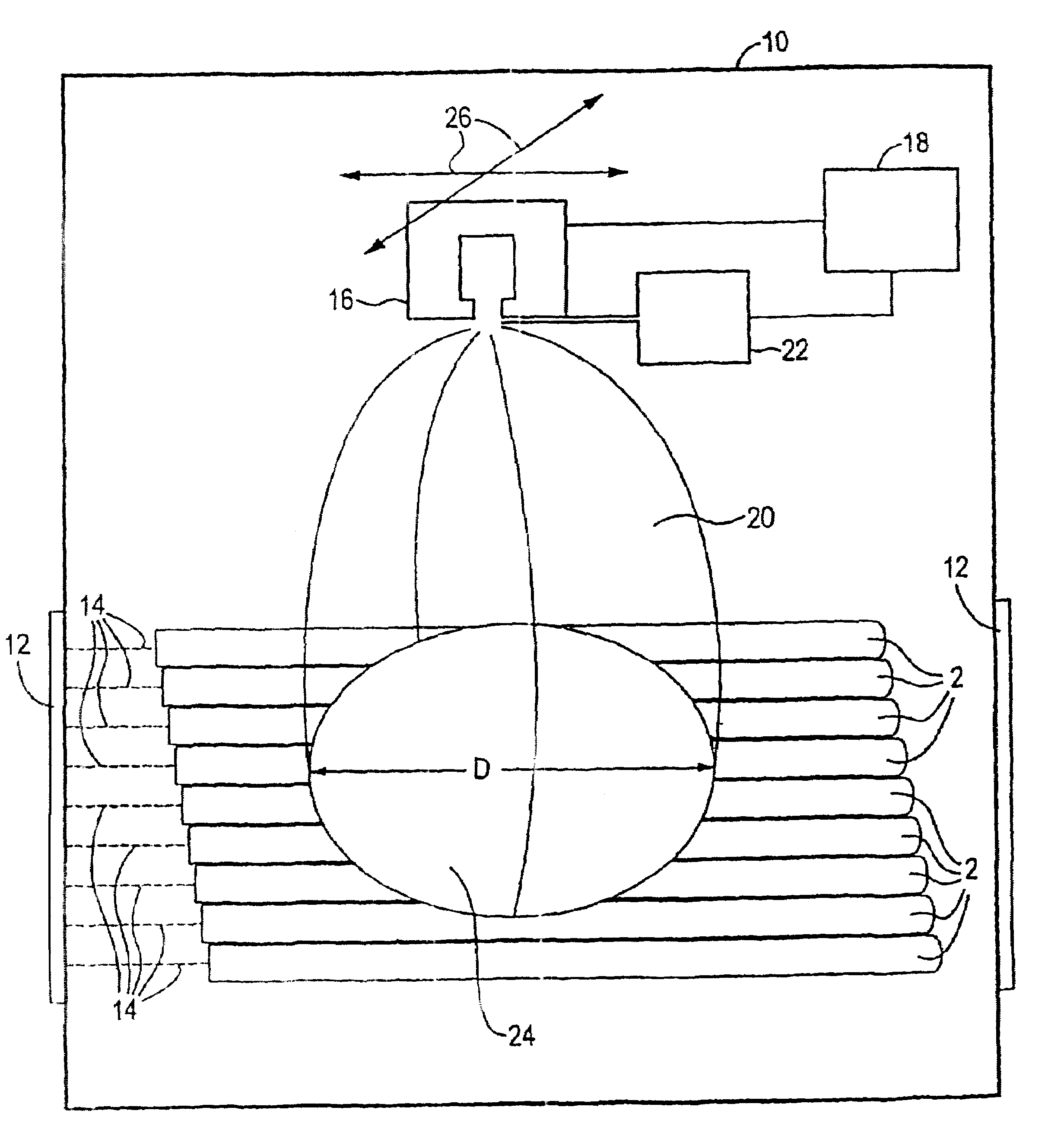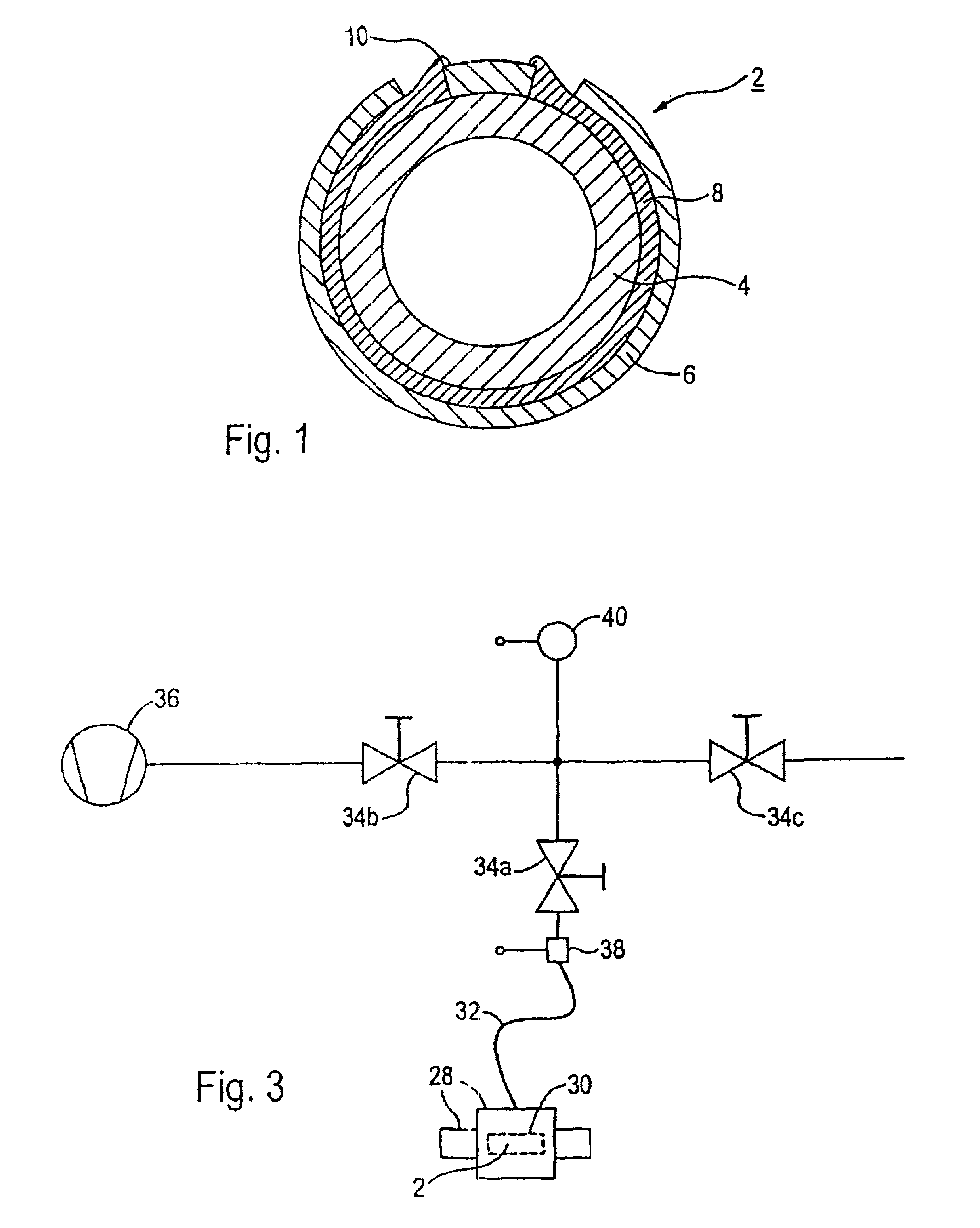Method for producing a solid ceramic fuel cell
a fuel cell and ceramic technology, applied in the direction of cell components, final product manufacturing, sustainable manufacturing/processing, etc., can solve the problems of high electrolyte layer demands, high cost and complexity of evd process, and replace the expensive evd process with other coating systems, etc., to achieve high efficiency and low cost. , the effect of simple process
- Summary
- Abstract
- Description
- Claims
- Application Information
AI Technical Summary
Benefits of technology
Problems solved by technology
Method used
Image
Examples
Embodiment Construction
[0039]In accordance with FIG. 1, a solid oxide, tubular fuel cell 2 includes a first electrode, which is referred to as cathode 4, and a second electrode, which is referred to as anode 6. The cathode 4 and the anode 6 are designed as cylinders arranged concentrically with respect to one another and consist of a porous ceramic material. A fuel cell 2 of this type with solid oxide electrodes is also known as an “SOFC fuel cell” (solid oxide fuel cell). Air or oxygen is passed through the inner tubular cathode 4, while a fuel, for example hydrogen, is guided past the anode 6 surrounding the cathode 4. The cathode 4 is also known as the air electrode and the anode 6 as the fuel electrode. A solid electrolyte layer 8 is arranged between the cathode 4 and the anode 6.
[0040]On the one hand, the solid electrolyte layer 8 has to be gastight, in order to prevent contact between the air and the fuel via the porous electrodes 4, 6. At the same time, the solid electrolyte layer 8 has to have a g...
PUM
| Property | Measurement | Unit |
|---|---|---|
| pressure | aaaaa | aaaaa |
| thickness | aaaaa | aaaaa |
| thickness | aaaaa | aaaaa |
Abstract
Description
Claims
Application Information
 Login to View More
Login to View More - R&D
- Intellectual Property
- Life Sciences
- Materials
- Tech Scout
- Unparalleled Data Quality
- Higher Quality Content
- 60% Fewer Hallucinations
Browse by: Latest US Patents, China's latest patents, Technical Efficacy Thesaurus, Application Domain, Technology Topic, Popular Technical Reports.
© 2025 PatSnap. All rights reserved.Legal|Privacy policy|Modern Slavery Act Transparency Statement|Sitemap|About US| Contact US: help@patsnap.com



